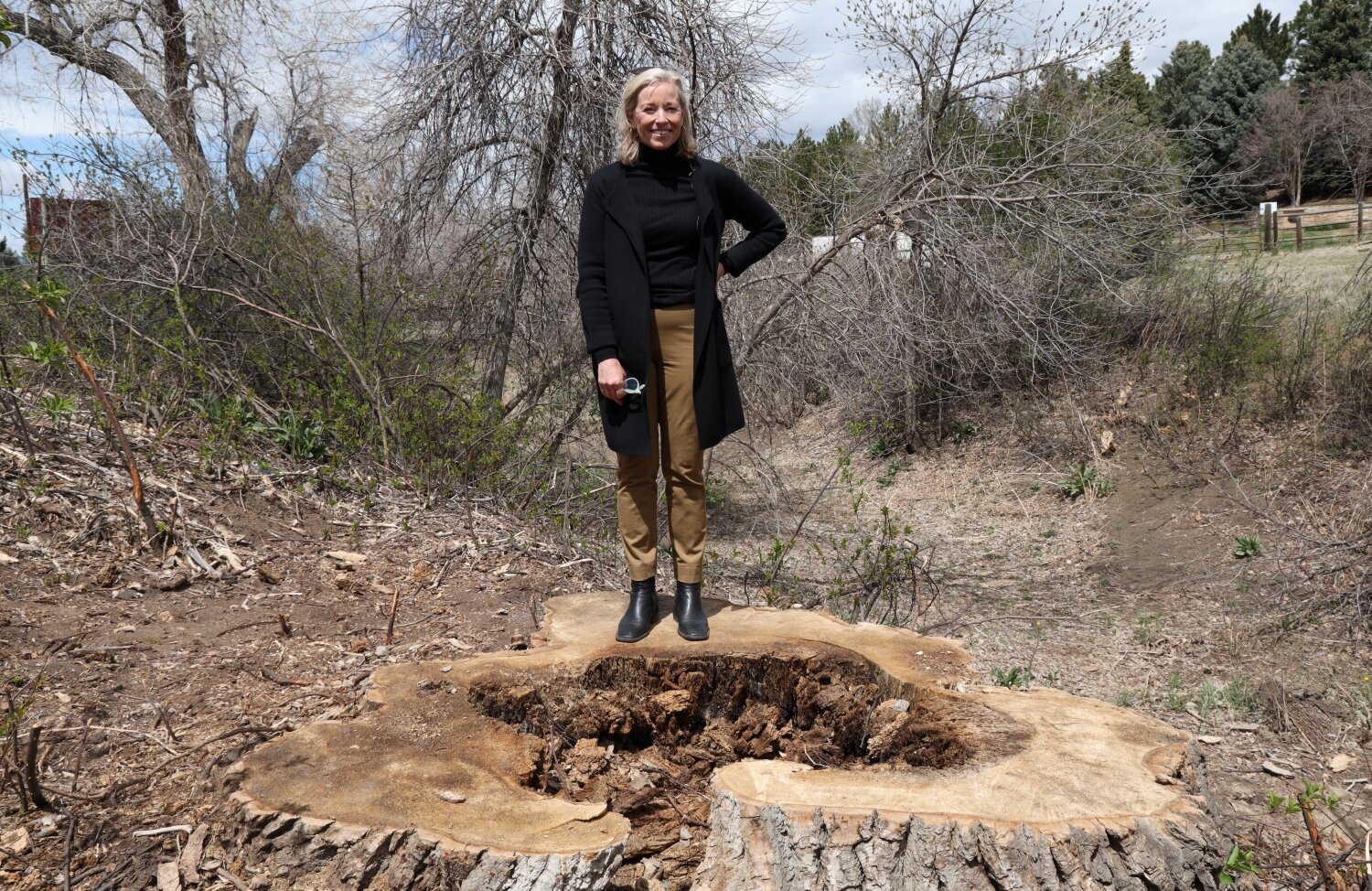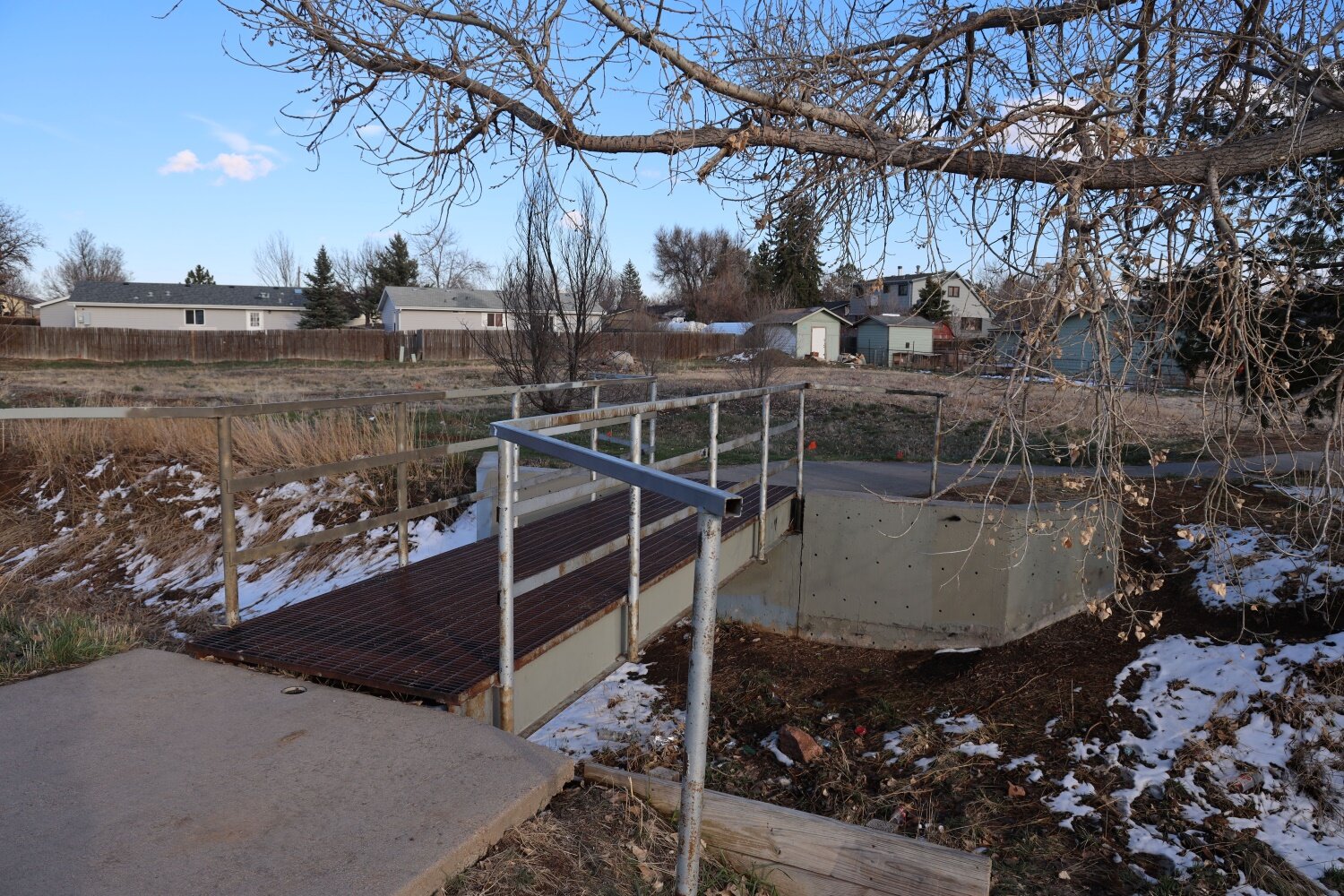Sharing the natural wealth of the High Line Canal

DENVER — More than 350,000 people live within one mile of the High Line Canal, a meandering 71-mile green space that weaves through Douglas, Arapahoe, Denver and Adams counties.
Most of them live along the canal’s northern 28 miles, which run through Aurora and Green Valley Ranch.
But many of the people in these northern communities don’t know the canal is even there, according to surveys conducted by the High Line Canal Conservancy, a non-profit dedicated to the care and maintenance of the High Line.
“Access to open space is so important to people's mental and physical health,” said Harriet Crittenden LaMair, CEO of the High Line Canal Conservancy.
“[The canal] moves into communities that don't have great access to open space, particularly these 28 miles,” LaMair said. “With the High Line Canal traveling through these communities that are so diverse, we have an incredible opportunity to provide access to people that don't get it.”
The Conservancy aims to change that, and it hopes $100 million will do the trick.
After nearly four years of fundraising $33 million to transform access to the canal, the Conservancy has just $700,000 left to go and is ready to start implementing its planned improvements.
About three-quarters of the money raised will be used to improve the canal’s northeast sections, LaMair said.
Public funding from local, state and federal government funds will supplement the money raised by the Conservancy totaling $100 million in investment over the next five years.
LaMair said the investment will focus on three key goals: improving access and safety, enhancing the canal’s natural resources and making the canal generally more enjoyable for the wide range of communities who use it.
A resource in transition
The High Line Canal has served the Denver metro area for more than 140 years – almost as long as Colorado has been a state. Initially built as an irrigation channel to bring water from the South Platte River to homes and farms popping up along the plains, most people today use the canal for outdoor recreation.
An independent group of British investors originally owned the canal, but they sold it to Denver Water in 1920. Since then, Denver Water has owned the entire length of the canal.
In 1970, a negotiation between Denver Water and the South Suburban Parks and Recreation District allowed people to use the canal as a recreational space. After that, local governments were able to lease sections of the canal from Denver Water, giving them some control but not full ownership.
Around that same time, Denver Water began winding down its irrigation service along the canal. The Rocky Mountain Arsenal (now the Rocky Mountain Arsenal Wildlife Refuge) used to be a major customer in the canal’s northern region.
Delivering water to the Arsenal via the canal became too expensive, so Denver Water turned to other methods of delivery for the Arsenal’s ponds.
This transition prompted Denver Water to stop using the canal to deliver to other customers in the northern region. As a result, that section of the canal “became sort of a neglected, ignored, old utility corridor,” LaMair said.
With water not flowing in that section, the tree canopy died, and it became less attractive as a recreational space. Local governments – who may have leased the land from Denver Water but didn’t own it – turned their attention and money to maintaining other, more obvious parklands.
“We heard from many [local governments] that they didn't feel like they wanted to invest in [the canal] because they didn't own it and thought maybe it could be taken away from them later,” LaMair said.
Communities south of Hampden Avenue, where water still regularly flows to about 30 irrigation customers, have historically recognized the canal as a park space because it still has a lush tree canopy. People in the area are more familiar with the canal as a recreational resource, so local governments and donors have invested more into maintaining it as an accessible green space.

Harriet Crittenden LaMair is a founding member of the High Line Canal Conservancy. She said her personal connection with the canal drives her to improve and protect the canal for generations to come.
Photo: Carly Rose, Rocky Mountain PBS
LaMair helped form the High Line Canal Conservancy in 2014. It was born out of a working group created by Arapahoe County to discuss the future of the canal. The conservancy partners with Denver Water, local governments and community volunteers to create a unified force dedicated to improving all 71 miles of the canal.
For the past 10 years, the Conservancy has been establishing itself within communities, fundraising and collecting community feedback. The implementation of the funding from the Great Lengths Campaign fundraiser marks a new chapter in the long history of the High Line Canal.
The people have spoken
As the Conservancy planned out how it would use the funding from the campaign, it reached out to community members across the different sections of the canal to learn what changes they wanted to see. It held open houses, sent out online surveys and ran focus groups.
These methods of outreach were effective in the southern regions along the canal, where engagement with the High Line has historically been higher. But they weren’t reaching as many people in the communities along the northeast sections of the canal, said Suzanna Fry Jones, chief programs and impact officer at the Conservancy.
In 2019, the Conservancy reached out to people living in the northeastern neighborhoods who were involved in their community and active along the canal to form the Northeast Committee.
The committee has about a dozen members who meet every other month to discuss the projects and programs planned for the canal.
“There are people of different ages, different sizes, different races,” committee member and Aurora resident Nelson Holland said. “It really helps that we can all reach out to the groups that we're familiar with and really tap the community to get their responses and figure out what they want for this trail.”
Holland, known on social media as “FatBlackandGettinIt” where he takes his nearly 300,000 followers on outdoor Colorado adventures, has lived in Aurora for five years since moving from New York. He lives about two miles from the canal.

Suzanna Fry Jones attends the Northeast Committee meetings to hear from committee members about the community’s perspective on the High Line Canal.
Photo: Carly Rose, Rocky Mountain PBS
Much of the committee’s outreach work is done through conducting surveys and hosting free community events, committee member Leslie Brown said. Brown likes to wear a shirt with the High Line Canal Conservancy’s logo as she walks the trail to encourage people to ask her questions about it.
“It's just been me trying to get my people in the community involved and know that there's this beautiful, beautiful trail right in their backyard,” Brown said.
Brown, a Westminster native who now lives in Aurora, has been an avid trail user since 2017. Looking back, Brown remembers hanging out with friends along the canal as a teenager, but back then she had no idea that she was using the canal.
Last summer, Brown completed her goal of walking all 71 miles of the canal, joining the ranks of other “High Liners” who’ve achieved the same feat.
“I have a special place in my heart for the Aurora side of it,” Brown said. “It's not as lush, but is still very pretty. You know, there's beauty everywhere. You just have to look for it.”
Through its outreach, the committee learned most community members in the northeast want more seating, signage and shade by the canal. Funding from the campaign will be used to build shade structures, plant trees, and add more benches and educational signage along the trail.
Community members have also asked for more neighborhood access points.
In areas where the canal hasn’t been recognized as a park space, fences often separate apartment buildings and houses from the trail.
“Just a few weeks ago, I was walking further north and there's all these houses, but there's no way of getting to the canal from the people's houses,” Brown said. “You would have to drive from your house all the way to this park to actually get onto the canal.”
Making the canal more accessible from residential areas is one way to increase awareness of the High Line in general. That’s how committee member Cynthia Armendáriz-Maxwell discovered the trail after moving to northeast Denver from Chicago two years ago.
Armendáriz-Maxwell, another High-Liner who has traversed all 71 miles, lives just 25 steps away from a trailhead.
She said a lot of people she spoke with said they wanted to see more park space where they could bring their families and activities for their children to engage with along the canal.
“A lot of the people I've been communicating with work very long hours, might work two or three jobs,” Armendáriz-Maxwell said. “When they do have free time, they're looking for something to do with their kids, with the grandparents, the whole family.”
Jones said this feedback inspired the design of a bike skills course next to the trail planned for the Green Valley Ranch area. The Conservancy has also designed a few shaded gathering areas that could be used as outdoor classrooms, including by Laredo Elementary School in Aurora.

Funding raised in the Great Lengths Campaign will be used to improve safety and access along the northeast section of the canal. That includes improving bridges that connect neighborhoods with the canal’s trail, like this bridge near Laredo Elementary School in Aurora.
Photo: Carly Rose, Rocky Mountain PBS
At the most recent Northeast Committee meeting, Jones presented the group with the $7 million check the Conservancy received from Great Outdoors Colorado allocated for improvements to that section of the High Line.
Holland said he can’t wait to see the funding reflected on the trail.
“The northeast section of the highline is really beautiful, but it does need some work,” Holland said. “I'm really happy that the funding is going to go up here. I think once people know about the canal more, once there are more resources over here for people, that this is going to become the place to be in Aurora.”
Brown is excited for the health benefits that the improvements will bring to her community as more people start using the trail. She’s passionate about encouraging people, especially women of color, to get outside for exercise and enjoyment.
“The improvements that are planned for this area I think will impact me by just being able to pull bring my grandchildren out and play,” Brown said. “I didn't grow up really in nature. But I want my grandchildren to see nature and be a part of it.”
Armendáriz-Maxwell said spending time along the canal has greatly improved both her physical and mental health. She’s hopeful that the improvements along the canal will help others in her community experience that same respite from their everyday stresses.
“I know how important it is for children and adults to have some release from all those stresses that poverty brings into your world,” Armendáriz-Maxwell said. “I think it's so exciting to be able to help communities who are really in dire need of easy access.”
“No cost whatsoever, it's just free,” she said. “Come on to the trail.”
Carly Rose is a multimedia producer at Rocky Mountain PBS. Carlyrose@rmpbs.org
